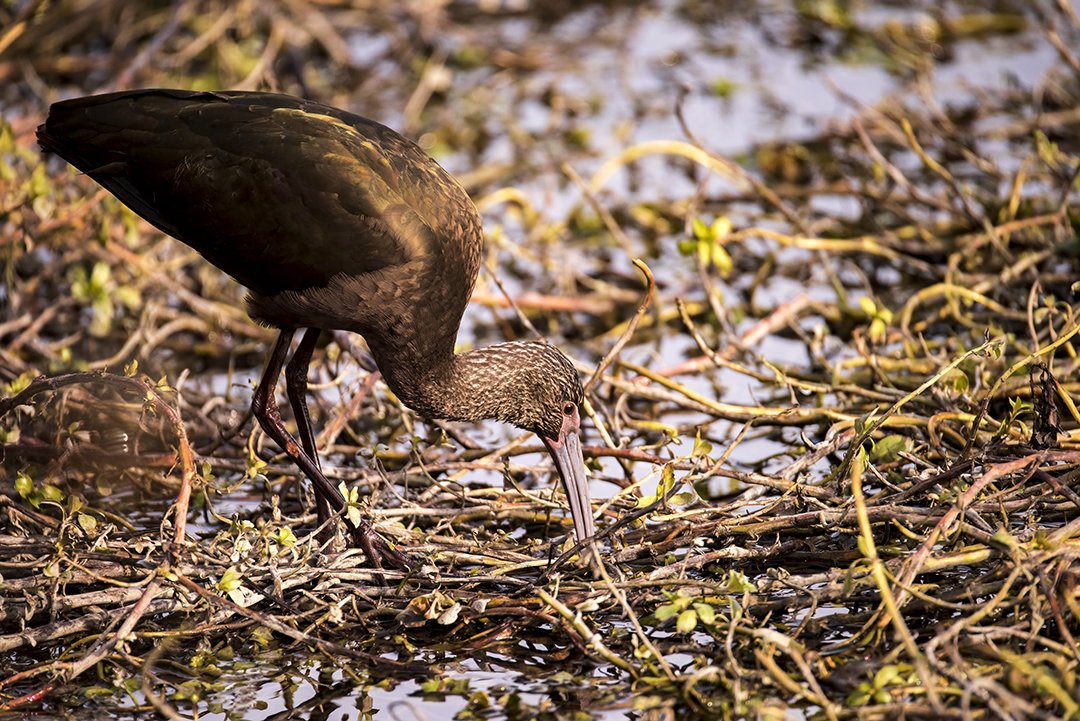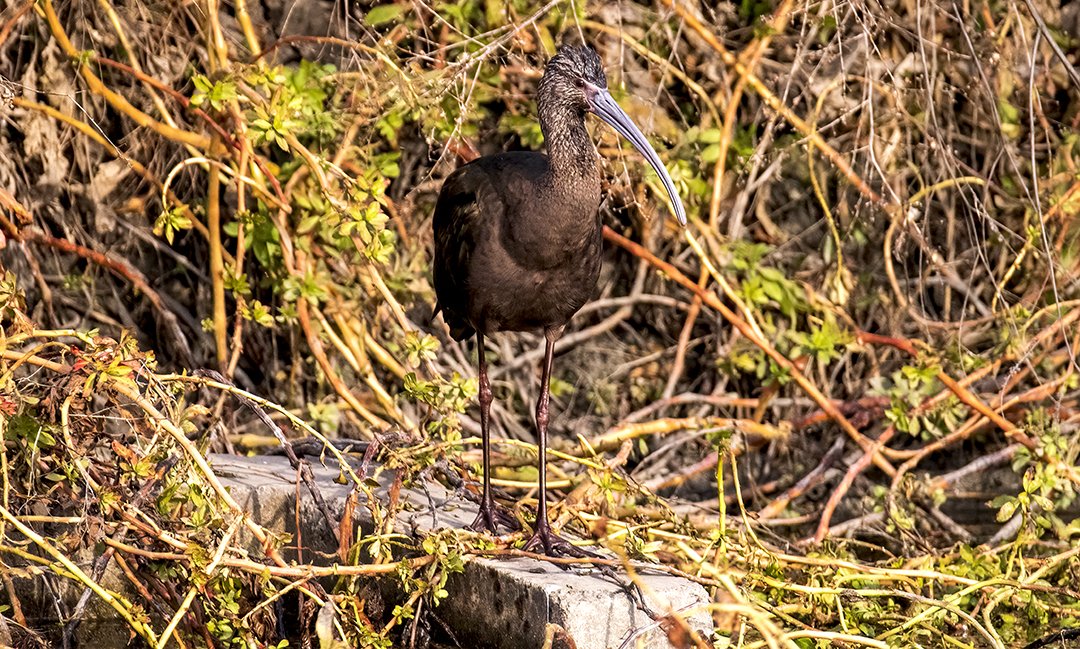Francesca Scalpi
Photography
White-faced Ibis
Plegadis chihi
ORDER: Pelecaniformes
FAMILY: Threskiornithidae
White-faced Ibis Photo 1
White-faced Ibis Photo 3
White-faced Ibis Photo 2
White-faced Ibis Photo 4
The handsome White-faced Ibis shimmers with purple, green, and bronze plumage. Breeding adults add to this a ruby-red eye surrounded by a sharp white mask, and pink legs. Flocks of this long-legged bird forage in marshes across large parts of the American West, where wetlands are very scarce and often ephemeral. They probe their long, curving bills into moist soil, searching for earthworms and other invertebrates, typically at the edges of marshes or in wet farm fields.
White-faced Ibis Photo 5
White-faced Ibis Photo 6
White-faced Ibis Photo 7
Look for White-faced Ibises in marshes or wet agricultural fields (especially alfalfa fields). In the arid western U.S., they often fly long distances to foraging areas from roosting areas, so the early morning and late afternoon are fine times to watch for them in transit. Checking wetland and field edges often produces a foraging flock; a spotting scope is useful to see fine details, such as all of the beautiful metallic tones of breeding-adult plumage.
White-faced Ibis Photo 8
White-faced Ibis Photo 9






